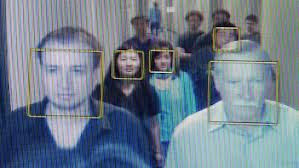
Monday, August 26, 2013
(arstechnica)
If you thought that license plate readers were fun, just wait until facial recognition gets better. Recall, facial recognition technology famously failed to catch the two Boston bombing suspects earlier this year, and it remains difficult to actually pull off quickly, accurately, and at a distance.
But according to new documents published by The New York Times on Wednesday, the tech is likely to improve in the near future. The documents show that the United States Department of Homeland Security (DHS) has a contract worth more than $5.155 million to create what’s been dubbed the “Biometric Optical Surveillance System (BOSS) at Stand-off Distance.” Included in the 67-pages worth of documents is a “statement of work”:
The DHS is responsible for the biometric identification of persons to determine if persons entering areas are currently on federal watch lists. To accomplish this task, DHS components require the ability to positively identify/screen individuals in a secure, efficient, accurate, and timely manner. This ability encompasses the collection, storage, transmission, and receipt of biometric and biographic data to support the component missions. The resulting capability will be portable and operable in a wide variety of areas and conditions (i.e. day/night, arid/humid climates, hot/cold temperature extremes.)
The output from these acquisition databases must be usable for searches of large-scale biometric databases (1 to many) and/or verification against a previously taken biometric sample (1 to 1).
The software will generate and identify a human subject 3-Dimensional facial biometric signature at stand-off distances up to 100 meters.
The primary contractor is Electronic Warfare Associates, a military contractor based in Kentucky. The contracted work took place between October 12, 2010 and November 16, 2012, although the document notes that the DHS “may give subsequent extension notices to the contractor in Writing for further performance in accordance with the contract.” The Times noted that a DHS official said that “research was continuing.”
However, if the government's current path down license plate reader deployment is any indication, once this technology becomes good enough, there will likely be federal grants to encourage local law enforcement to use such capabilities. Currently, license plate data is often pooled together into regional "fusion centers," which can then be more easily accessed by federal authorities. And if law enforcement agencies claim the authority to capture and store license plate data en masse for great periods of time, it doesn't take a great leap of logic to foresee this capability extended to facial recognition as well...
(more)
1 Comments:


Cheap LOL Account
elo boost